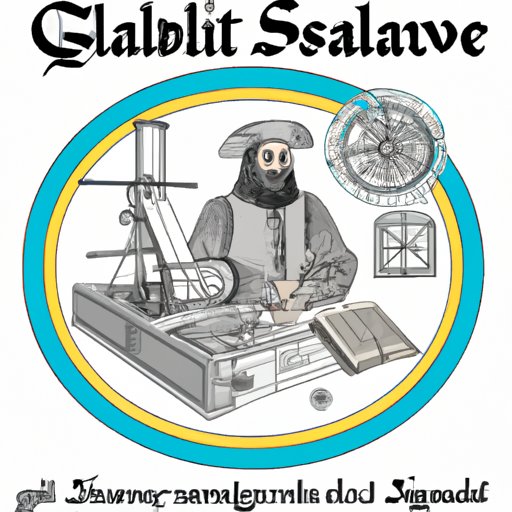Introduction
The Renaissance is widely considered one of the most important periods in the history of science. The term “Renaissance” refers to a period of cultural rebirth that began in Italy during the 14th century and spread throughout Europe by the 16th century. It was during this period that some of the most important advances in science were made, leading to what has come to be known as the Scientific Revolution.

Exploring the Impact of Humanism on Science
Humanism was a major influence during the Renaissance period. Humanists believed that humans could understand the natural world through observation, experimentation, and logical reasoning. This was a stark contrast to the prevailing view of the Middle Ages, which held that all knowledge came from divine revelation. By rejecting the notion of divine authority, humanists opened the door for new ways of thinking about the natural world.
This shift in thinking had a profound impact on science. Humanists encouraged people to study nature and develop theories based on their observations. This led to an increased focus on experimentation and evidence-based research, which laid the groundwork for the scientific method as we know it today.
One of the most important figures in this movement was Italian philosopher and historian Francesco Petrarch. Petrarch wrote extensively about the importance of humanistic learning and argued that humans should strive to understand the natural world in order to better appreciate its beauty. His works had a profound influence on later scientists such as Galileo Galilei and Isaac Newton.
The Development of Astronomy and Geography During the Renaissance
Astronomy was one of the most significant fields of study during the Renaissance. Astronomers of the period made several major discoveries, including the heliocentric model of the solar system, which proposed that the Earth and other planets revolve around the Sun. This contradicted the traditional geocentric model, which held that the Earth was the center of the universe.
Geography also saw significant advancements during this time. Explorers like Christopher Columbus and Ferdinand Magellan mapped out large portions of the globe, while cartographers created detailed maps of the world. These maps allowed people to better understand the physical features of the world and made it easier to plan voyages and trading routes.

Galileo Galilei and His Impact on Science
Galileo Galilei is one of the most famous scientists of the Renaissance period. He made numerous groundbreaking discoveries in the fields of astronomy, physics, and mathematics. He was the first to observe four of Jupiter’s moons, and he developed the law of inertia, which states that an object will stay in motion unless acted upon by an external force.
Galileo’s work had a huge impact on later scientists. His observations of the heavens helped to confirm the heliocentric model of the solar system, while his experiments with gravity provided insight into the laws of motion. His work also inspired later scientists such as Isaac Newton to make further breakthroughs in the fields of astronomy and physics.

Innovations in Mathematics During the Renaissance
Mathematics was another field that saw significant advances during the Renaissance. Mathematicians of the period developed new ways of representing numbers and made breakthroughs in algebra and geometry. Perhaps the most famous mathematician of the era was Italian scholar Leonardo Fibonacci, who developed the Fibonacci sequence and popularized the use of Arabic numerals in Europe.
Mathematics played an important role in the advancement of science. Its ability to accurately represent and measure physical phenomena allowed scientists to better understand the natural world. For example, Galileo used mathematical equations to explain his observations of falling objects, while Isaac Newton used calculus to formulate his laws of motion.
The Printing Press and Its Role in Disseminating Scientific Knowledge
The invention of the printing press was another important factor in the advancement of science during the Renaissance. The press allowed for the mass production of books, making it much easier to disseminate scientific knowledge. This allowed scientists to share their ideas more easily, which in turn led to the formation of scientific societies and academies.
The printing press also enabled the rapid spread of new technologies. Books and pamphlets detailing innovations in agriculture and industry, as well as new tools and techniques, were printed and distributed throughout Europe. This allowed people to quickly learn about and adopt new methods, leading to an increase in productivity and a rise in living standards.
Conclusion
The Renaissance was a time of great scientific advancement and discovery. Humanism, astronomy, geography, Galileo Galilei, mathematics, and the printing press all played an important role in the Scientific Revolution of this period. Together, these developments laid the foundation for modern science and helped to usher in a new era of progress and enlightenment.
(Note: Is this article not meeting your expectations? Do you have knowledge or insights to share? Unlock new opportunities and expand your reach by joining our authors team. Click Registration to join us and share your expertise with our readers.)
